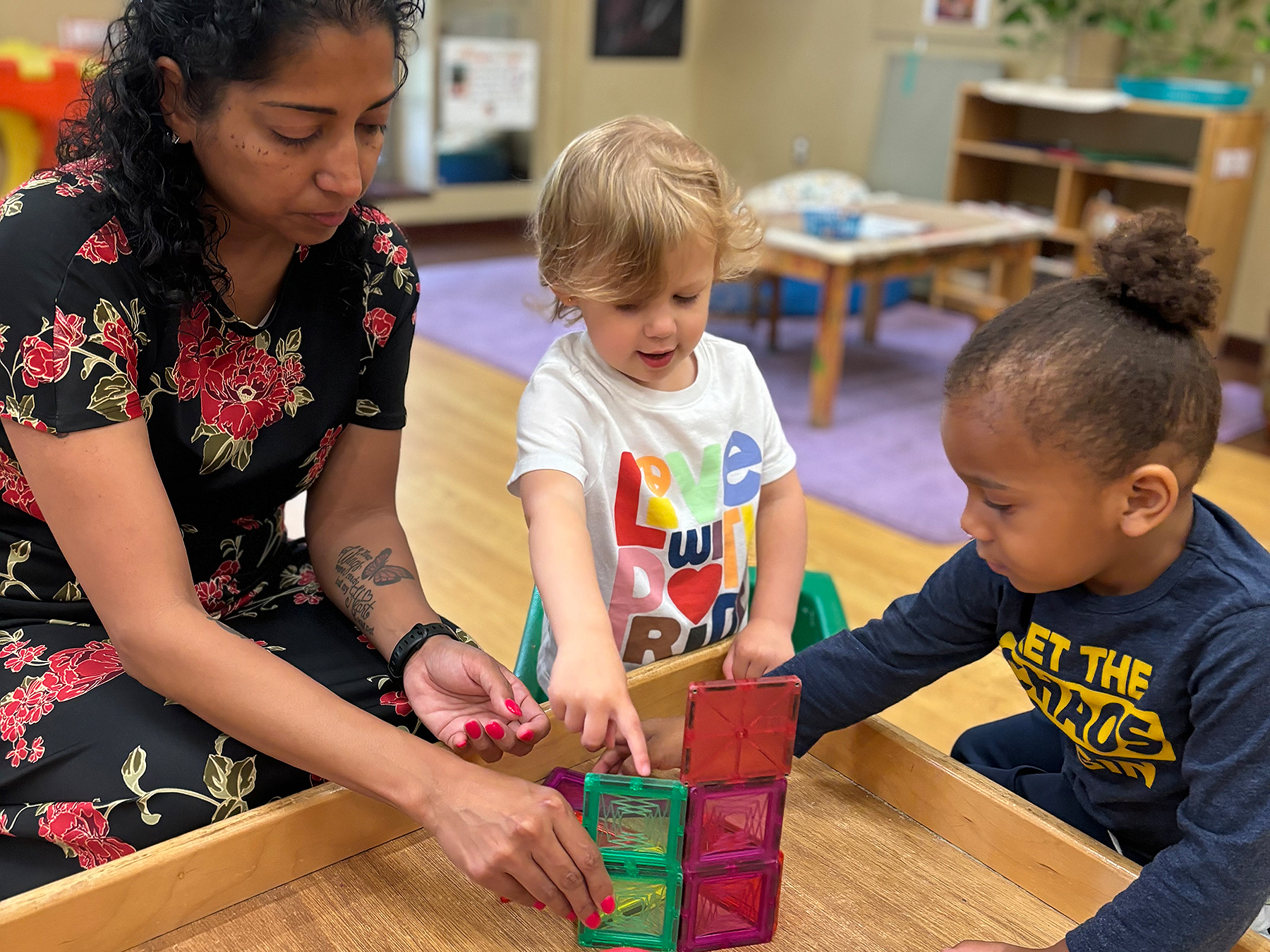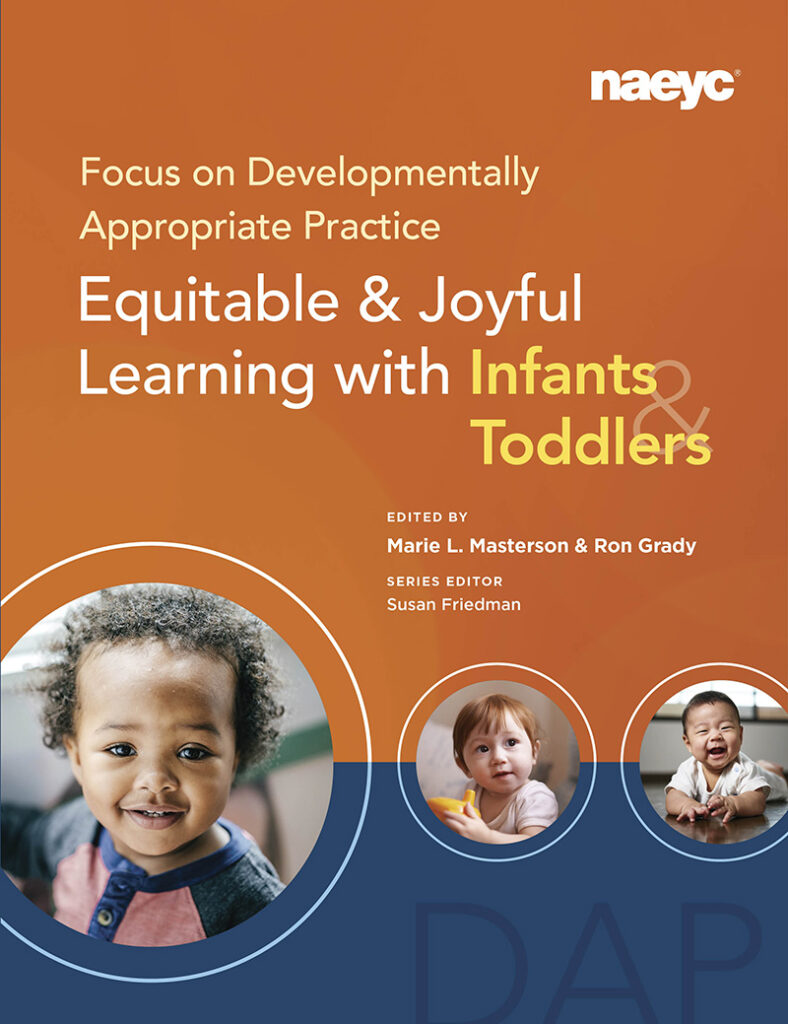
For young children, learning how to read and write can be the culmination of literacy experiences that begin in infancy and expand when they are toddlers. Dilshad Tolliver, an early childhood education specialist at the A. Sophie Rogers School for Early Learning, has written about these experiences in her classroom for a new book published by the National Association for the Education of Young Children (NAEYC), the leading professional organization for early childhood educators.

Tolliver’s chapter “We Put Paper on the Floor: Supporting the Emergent Literacy Skills of Infants and Toddlers,” appears in Equitable and Joyful Learning with Infants and Toddlers, edited by Marie L. Masterson and Ron Grady. The book is part of the NAEYC series Focus on Developmentally Appropriate Practice.
In the chapter, Tolliver provides examples of infants and toddlers learning first how to grasp writing tools, then using those tools to make marks, and eventually creating purposeful strings of letterlike marks as their experiences and development prepare them for literacy.
“We view children as readers and writers, and we strive to provide materials in support of this,” Tolliver writes.
Equally important are the experiences infants and toddlers have with books and other written materials. From the physical activity of flipping book pages, to looking at pictures and letters on a page, and then being able to identify those pictures and retell a story, the exposure to books from infancy prepares young children to connect meaning to printed letters and words.
“In our classroom, we constantly see connections between children looking at print as they flip through books and the marks they make with crayons and other materials to represent print,” Tolliver writes.
The book Equitable and Joyful Learning with Infants and Toddlers is available for purchase, in print or as an e-book, from the NAEYC website.


